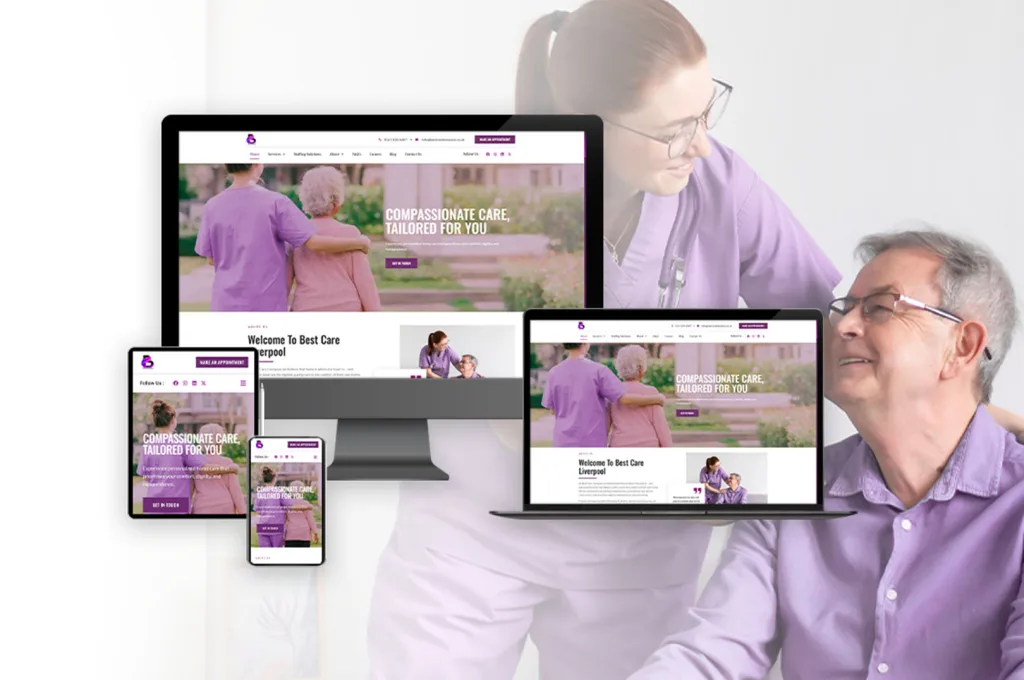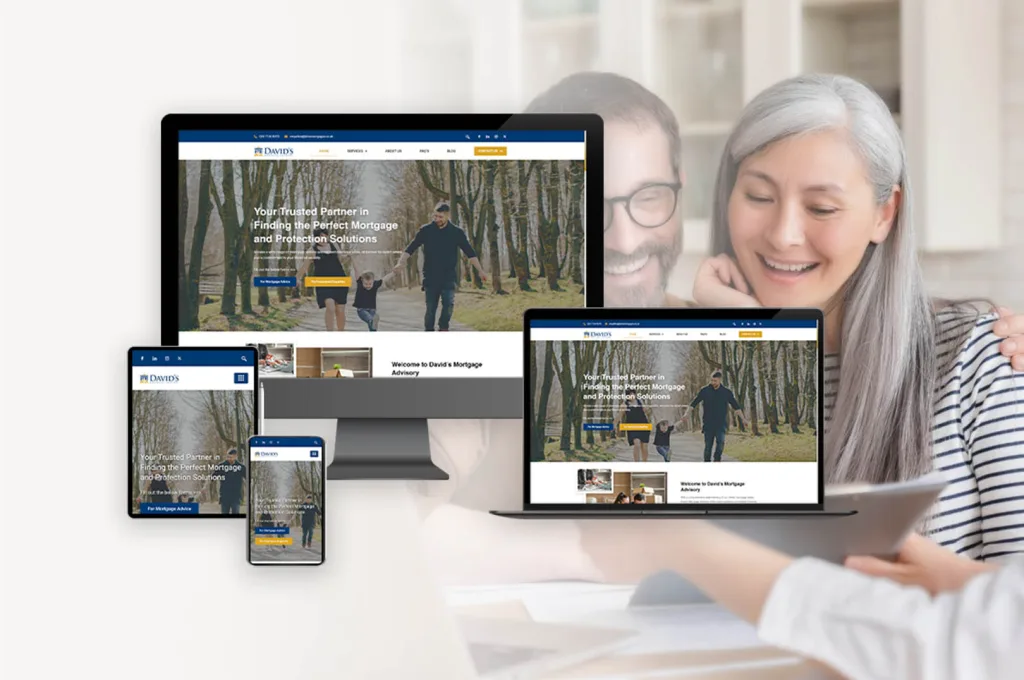How to create a successful website redesign project: Best practices and tips
Introduction
Creating a successful website redesign project can be a daunting task. It requires careful planning, research, and execution. It is important to consider the user experience, design, and functionality of the website. This article will provide best practices and tips to help you create a successful website redesign project. We will discuss the importance of user research, the importance of a well-defined project plan, and the importance of testing and feedback. We will also discuss the importance of communication and collaboration throughout the project. By following these best practices and tips, you can ensure that your website redesign project is successful.

How to Develop a Comprehensive Website Redesign Plan
Developing a comprehensive website redesign plan is essential for any business that wants to stay competitive in the digital age. A website redesign plan should include a detailed analysis of the current website, a clear vision for the new website, and a timeline for implementation. This article will provide a step-by-step guide to developing a comprehensive website redesign plan.
Step 1: Analyze the Current Website
The first step in developing a comprehensive website redesign plan is to analyze the current website. This analysis should include an assessment of the website’s design, content, usability, and performance. It should also include an analysis of the website’s analytics, such as page views, bounce rate, and conversion rate. This analysis will provide valuable insights into the website’s strengths and weaknesses, which can be used to inform the redesign plan.
Step 2: Set Goals and Objectives
The next step is to set goals and objectives for the website redesign. These goals and objectives should be specific, measurable, achievable, relevant, and time-bound (SMART). They should also be aligned with the overall business objectives. For example, if the goal is to increase website traffic, the objectives might include increasing the number of page views, reducing the bounce rate, and improving the website’s search engine optimization (SEO).
Step 3: Create a Vision for the New Website
Once the goals and objectives have been set, it’s time to create a vision for the new website. This vision should include a detailed description of the website’s design, content, and functionality. It should also include a list of features and technologies that will be used to create the website. This vision will serve as the foundation for the website redesign plan.
Step 4: Develop a Timeline
The next step is to develop a timeline for the website redesign. This timeline should include milestones for each stage of the redesign process, such as design, development, testing, and launch. It should also include a timeline for any additional tasks, such as content creation and SEO optimization. This timeline will help ensure that the website redesign is completed on time and on budget.
Step 5: Create a Budget
The final step is to create a budget for the website redesign. This budget should include all of the costs associated with the redesign, such as design, development, hosting, and maintenance. It should also include any additional costs, such as content creation and SEO optimization. This budget will help ensure that the website redesign is completed within the allocated budget.
By following these steps, businesses can develop a comprehensive website redesign plan that will help them stay competitive in the digital age. A comprehensive website redesign plan should include a detailed analysis of the current website, a clear vision for the new website, and a timeline and budget for implementation. By following this guide, businesses can ensure that their website redesign is successful.
Identifying Your Website Redesign Goals and Objectives
The goal of a website redesign is to create a website that is more user-friendly, visually appealing, and better able to meet the needs of its users. To achieve this goal, it is important to identify specific objectives that will guide the redesign process.
The first objective should be to create a website that is easy to navigate. This means that users should be able to find the information they need quickly and easily. The navigation should be intuitive and the design should be organized in a way that makes sense to the user.
The second objective should be to create a website that is visually appealing. This means that the design should be attractive and engaging. The colors, fonts, and images should be chosen carefully to create a cohesive look and feel.
The third objective should be to create a website that is optimized for search engine optimization (SEO). This means that the website should be designed in a way that makes it easy for search engines to find and index the content. This includes using relevant keywords, creating meta tags, and optimizing the website’s code.
The fourth objective should be to create a website that is mobile-friendly. This means that the website should be designed to be easily viewed and navigated on mobile devices. This includes making sure that the design is responsive and that the content is optimized for mobile devices.
Finally, the fifth objective should be to create a website that is secure. This means that the website should be designed with security in mind. This includes using secure protocols, encrypting data, and using secure hosting.
By identifying these objectives, you can ensure that your website redesign is successful and meets the needs of its users.
Understanding the Benefits of a Website Redesign
A website redesign can be a powerful tool for businesses looking to increase their online presence and reach new customers. By updating the look and feel of a website, businesses can create a more engaging and user-friendly experience for their customers. Additionally, a website redesign can help businesses stay competitive in the ever-changing digital landscape.
The most obvious benefit of a website redesign is the improved aesthetics. A modern, visually appealing website can help businesses stand out from the competition and attract more visitors. Additionally, a website redesign can help businesses create a more intuitive user experience. By making navigation easier and more intuitive, businesses can ensure that visitors can quickly find the information they need.
A website redesign can also help businesses stay up-to-date with the latest technology. By incorporating the latest web design trends, businesses can ensure that their website is optimized for mobile devices and other modern technologies. Additionally, a website redesign can help businesses improve their search engine optimization (SEO) efforts. By incorporating the latest SEO techniques, businesses can ensure that their website is more visible in search engine results.
Finally, a website redesign can help businesses create a more secure environment for their customers. By incorporating the latest security measures, businesses can ensure that their customers’ data is safe and secure. Additionally, a website redesign can help businesses comply with the latest industry regulations and standards.
In summary, a website redesign can be a powerful tool for businesses looking to increase their online presence and reach new customers. By updating the look and feel of a website, businesses can create a more engaging and user-friendly experience for their customers. Additionally, a website redesign can help businesses stay competitive in the ever-changing digital landscape, stay up-to-date with the latest technology, and create a more secure environment for their customers.
How to Choose the Right Design Elements for Your Website Redesign
When it comes to website redesigns, the design elements you choose can make or break the success of your website. It is important to take the time to carefully consider the design elements you will use to ensure that your website is attractive, user-friendly, and effective. Here are some tips to help you choose the right design elements for your website redesign.
1. Consider Your Audience: Before you begin your website redesign, it is important to consider who your target audience is. This will help you determine the type of design elements that will be most effective in engaging your audience. For example, if your target audience is young adults, you may want to use bold colors and modern fonts to create a visually appealing website.
2. Keep It Simple: When it comes to website design, less is often more. Avoid using too many design elements as this can make your website look cluttered and overwhelming. Instead, focus on using a few simple design elements that will help to create a clean and organized look.
3. Choose the Right Colors: Colors can have a powerful impact on how your website is perceived. Choose colors that are in line with your brand and that will help to create a cohesive look. Additionally, make sure that the colors you choose are easy to read and don’t clash with each other.
4. Use Quality Images: Quality images can help to make your website more visually appealing and engaging. When selecting images, make sure that they are high-resolution and relevant to your website’s content.
5. Test Your Design: Once you have chosen the design elements for your website, it is important to test them to ensure that they are effective. Test your website on different devices and browsers to make sure that it looks and functions properly.
By following these tips, you can ensure that you choose the right design elements for your website redesign. Taking the time to carefully consider the design elements you use will help to create a website that is attractive, user-friendly, and effective.
Tips for Working with a Web Design Agency on Your Website Redesign Project
1. Have a Clear Vision: Before you begin working with a web design agency, it is important to have a clear vision of what you want your website to look like. Make sure you have a good understanding of your target audience, the purpose of the website, and the desired user experience.
2. Set a Budget: Before you start working with a web design agency, it is important to set a budget for the project. This will help ensure that you are able to get the most out of your investment.
3. Research Agencies: Take the time to research different web design agencies to find the one that best fits your needs. Look at their portfolio, read reviews, and ask for references.
4. Communicate Your Needs: Once you have chosen a web design agency, make sure to communicate your needs clearly. Provide them with detailed information about your project, including the desired look and feel, the target audience, and the desired user experience.
5. Set Deadlines: Make sure to set realistic deadlines for the project. This will help ensure that the project is completed on time and within budget.
6. Provide Feedback: Throughout the project, provide feedback to the web design agency. This will help ensure that the website meets your expectations and is completed to your satisfaction.
7. Test the Website: Once the website is complete, make sure to test it thoroughly. This will help ensure that the website is functioning properly and that there are no bugs or errors.
Conclusion
A successful website redesign project requires careful planning, research, and execution. It is important to consider the user experience, the goals of the project, and the budget. Additionally, it is important to involve stakeholders in the process, create a timeline, and test the website before launch. By following these best practices and tips, you can ensure that your website redesign project is successful.
Take the first step towards creating a successful website redesign project by following the best practices and tips outlined in this article. From understanding the scope of the project to setting realistic goals, these tips will help you create a website that meets your needs and exceeds your expectations. Click here to get started on your website redesign project today!
FEATURED POSTS
-
 Elegant Shines at BestWeb.LK 2025 with 4 Prestigious Awards
Elegant Shines at BestWeb.LK 2025 with 4 Prestigious Awards -
 Why Every Bakery Needs a Professional Website
Why Every Bakery Needs a Professional Website -
 Why Yoga Instructors or Yoga Institutes Should Have a Professional Website
Why Yoga Instructors or Yoga Institutes Should Have a Professional Website -
 How a Mobile Friendly Website Can Boost Your Sales
How a Mobile Friendly Website Can Boost Your Sales -
 ELEGANT Launches New Website for Best Care Liverpool
ELEGANT Launches New Website for Best Care Liverpool -
 ELEGANT Launches New Website for David’s Mortgage Advisory Ltd with a Fresh, Professional Look
ELEGANT Launches New Website for David’s Mortgage Advisory Ltd with a Fresh, Professional Look



